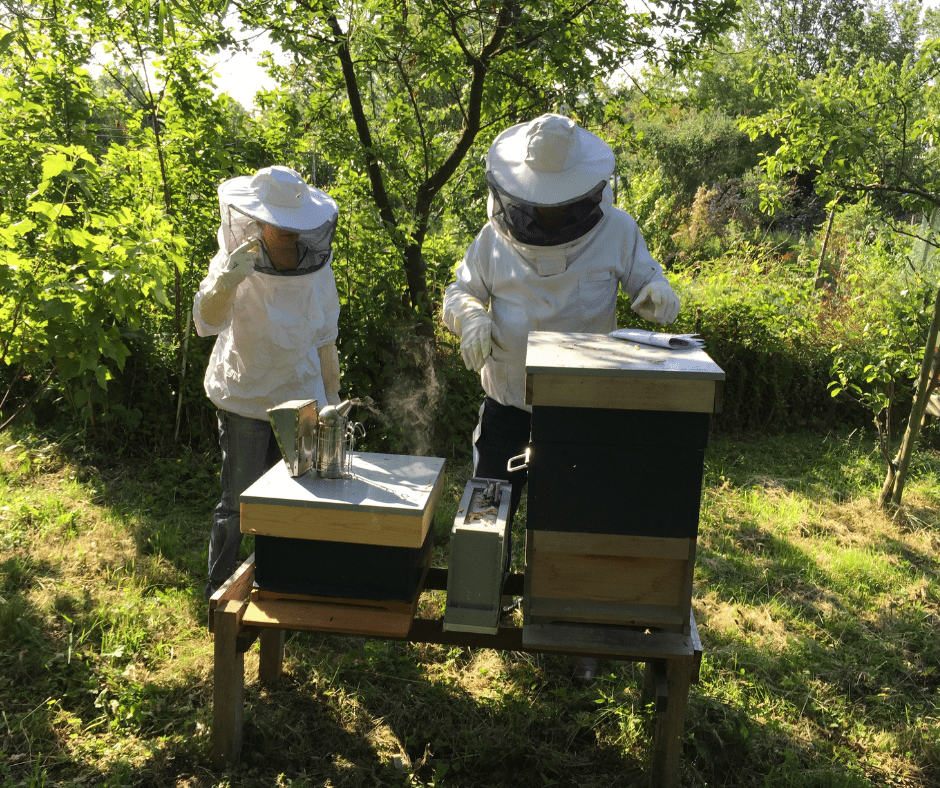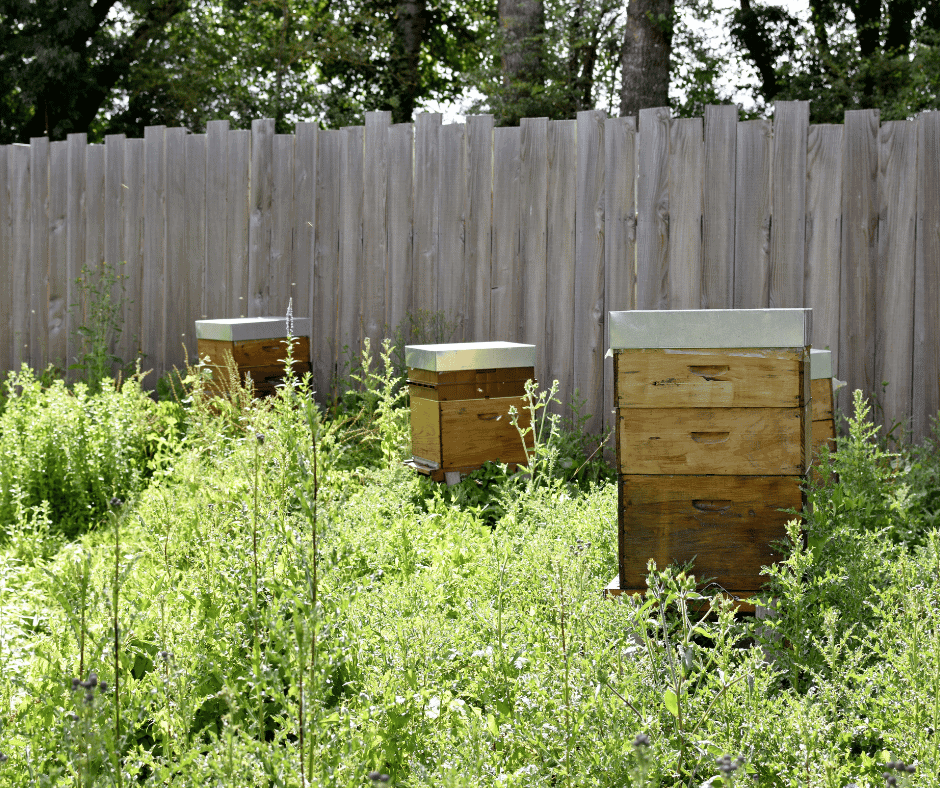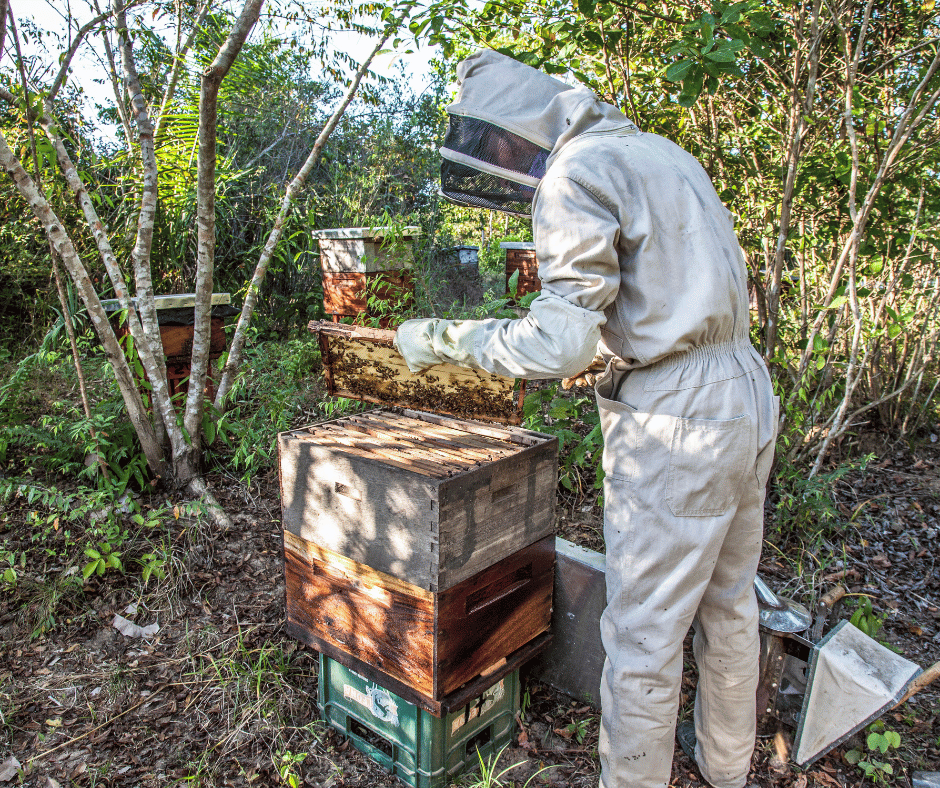
Beekeeping is a rewarding and fascinating hobby, but it’s also important to understand the best practices for maintaining healthy bees. In this blog article, we’ll explore the benefits of placing a beehive in sun or shade, examine how sunlight impacts bee health and productivity, investigate optimal conditions for keeping bees healthy and productive, and balance temperature regulation with light exposure.
By understanding these factors better, you can maximize honey production from your beehive while ensuring that your bees stay happy and healthy.
When deciding where to place a beehive, one of the most important factors to consider is whether it should be in the sun or shade. While there are benefits and drawbacks to both options, understanding the needs of bees can help determine which location will provide them with the best environment for their health and productivity.
Bees need access to sunlight in order to regulate their body temperature and metabolize food efficiently. Without adequate exposure, they may become sluggish or even die from hypothermia during cold weather months.
On hot days, however, too much direct sunlight can cause overheating inside the hive which could lead to dehydration and death as well.
Therefore, it is important that hives receive enough light but not too much heat from direct rays of sunshine throughout the day.
Shade provides protection from extreme temperatures while still allowing some natural light into a hive; this helps keep bees cool on hot days without sacrificing necessary energy production for survival purposes such as flight or digestion of nectar into honeycomb cells.
Additionally, shaded areas tend to have more consistent temperatures than those exposed directly under bright sunlight; this means less fluctuation between night-time lows and daytime highs which can create stress on bee colonies over time.
In addition, shade also offers some degree of protection against predators such as birds who might otherwise swoop down upon an unprotected hive if it were out in full view.
This makes shaded locations ideal for keeping colonies safe while still providing them with enough natural light so they don’t suffer any ill effects due to lack thereof.
Ultimately, when considering whether a beehive should be placed in sun or shade, one must weigh all pros and cons carefully before making any decisions; taking into account both environmental conditions (temperature fluctuations) along with potential threats posed by predators are key elements that must not go overlooked when determining what’s best for your colony’s long-term health success!
Table of Contents
Uncovering the Benefits of Placing a Beehive in Sun or Shade

The primary benefit of placing a beehive in the sun is that it helps keep the hive warm during cold weather. This can help bees survive winter and produce more honey when temperatures drop below freezing.
Additionally, hives placed in direct sunlight will also experience higher levels of humidity due to evaporative cooling from water droplets on leaves and flowers nearby. This increased humidity can provide beneficial protection against mites and other pests that may otherwise threaten your colony’s health.
On the other hand, hives placed in shaded areas have their own advantages as well; they tend to remain cooler throughout summer months which helps reduce stress on bees while they collect nectar from flowers during hot days.
In addition, shading a beehive also reduces its visibility from predators such as bears or skunks who might otherwise try to steal honey or damage equipment inside the hive itself if left unshaded for too long periods of time.
Ultimately deciding whether you should place your beehive in sun or shade depends largely on where you live; some climates may require more protection than others depending upon temperature extremes experienced year-round so doing research into local conditions before making this decision is highly recommended by experts.
By taking all factors into consideration, beekeepers everywhere can ensure their colonies are given every opportunity possible for success!
Exploring the Impact of Sunlight on Bee Health and Productivity

Beekeeping is a complex process that requires careful consideration of environmental factors. One of the most important considerations is whether to place a beehive in direct sunlight or shade.
Sunlight has an impact on bee health and productivity, so it’s essential to understand how light affects bees before making any decisions about where to locate your hives.
Studies have shown that exposure to sunlight can help bees regulate their body temperature, which helps them stay healthy and productive during hot weather conditions.
Additionally, sunshine provides necessary Vitamin D for bees, which aids in calcium absorption and strengthens their immune system against diseases like American Foulbrood (AFB).
Furthermore, research suggests that sun exposure increases honey production by stimulating nectar flow from flowers as well as promoting pollen collection from plants with higher sugar content.
On the other hand, too much sun can also be detrimental to bee health; prolonged exposure can cause dehydration due to increased water loss through evaporation from open cells within the hive bodies.
In addition, excessive heat may lead to decreased activity levels among worker bees resulting in reduced pollination rates and lower honey yields overall.
Therefore it’s important not only to consider how much sun your hives are receiving but also what type of environment they’re exposed to:
Is there enough ventilation?
Are there nearby trees providing some shade?
Ultimately when deciding between placing a beehive in direct sunlight or shade you must take into account both potential benefits and risks associated with each option while keeping an eye on local climate conditions throughout the year – this will ensure optimal bee health and productivity!
Examining How to Maximize Honey Production Through Location Choice
As we have already said, the amount of sunlight that a hive receives can have an impact on its productivity and health. Too much direct sunlight can cause overheating, while too little may not provide enough warmth for the bees to remain active during colder months. Therefore, finding the right balance between sun and shade is essential for successful beekeeping.
Additionally, you’ll want to make sure there are plenty of flowering plants nearby so that your bees have access to nectar-rich food sources all year round – this will help them produce more honey!
Finally, if possible try placing your hives away from areas with high winds which can disturb their delicate structures and disrupt their activity patterns; instead opt for sheltered spots surrounded by trees or shrubs if available near you.
By taking these factors into account when selecting an ideal spot for your beehive you’ll ensure maximum honey production over time!
Investigating Optimal Conditions for Maintaining Healthy Bees

Research has shown that there are benefits to both approaches. In sunny areas, hives can benefit from direct sunlight as it helps keep them warm during the winter months and encourages pollination of nearby flowers.
On the other hand, shady spots provide protection from extreme temperatures and help prevent overheating during summer months when temperatures are high.
It’s important to note that too much exposure to either one could have negative effects on bee health; too much heat can cause dehydration while too little light may lead to poor nutrition due to the lack of pollen sources available in shaded areas. Therefore, finding a balance between sun and shade is ideal when determining where best place your hive(s).
Furthermore, having access points such as windows or screened openings allows natural light into the hive without exposing them directly to harsh elements outside.
Ultimately, understanding how different environmental factors affect bee health will ensure you create an environment conducive to their survival so they can continue producing honey year after year!
Balancing Temperature Regulation and Light Exposure for Beehives
When it comes to beehive management, one of the most important considerations is balancing temperature regulation and light exposure. Bees need a certain amount of warmth in order to thrive, but too much heat can cause them stress and reduce their productivity.
On the other hand, bees also require adequate sunlight for optimal health and development.
In general, beekeepers should aim to provide their hives with partial shade during hot summer months while still allowing enough light for the bees’ needs. This can be achieved by placing hives near trees or shrubs that will provide some protection from direct sunlight while still allowing sufficient amounts of indirect light through leaves or branches.
Additionally, providing ventilation at the top of each hive will help keep temperatures regulated inside even on hot days as air circulates through any openings in the structure’s roofing material or walls.
Beekeepers should also consider seasonal changes when deciding where to place their hives; during colder months when there isn’t as much natural sunlight available, they may want to move them closer together so that they are able to share body heat more easily among themselves in order to stay warm enough.
Overall, finding a balance between temperature regulation and adequate light exposure is essential for successful beekeeping operations since both factors play an important role in keeping colonies healthy over time.
By taking into account seasonal variations along with local climate conditions, beekeepers can ensure that their hives remain comfortable year-round no matter what Mother Nature throws at them!



